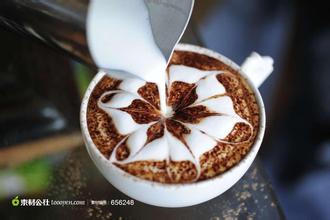Brazilian Coffee Bean Location Conditions Brand Characteristics Flavor Description Grindness Treatment Introduction
Description of the flavor of Brazilian coffee beans
Including all coffee beans grown in Brazil, except for Santos, Brazilian beans are mostly "cheap and good" coffee. Can be used for mass production of comprehensive coffee beans, most of which are re-roasted. The main raw material of instant coffee is also Brazilian coffee beans. When the coffee bean germ is very fresh, it is artificially refined and naturally dried in the vulva for about 60-70 days, so that the sweetness of the pulp fully infiltrates into the bean. Features: coffee beans have a strong aroma, moderate bitterness, high texture acidity, soft overall taste, low acidity and endless aftertaste. The taste of Brazilian coffee has a low sour taste, with the sweet and bitter taste of coffee, the entrance is very smooth, but also with a hint of grass aroma, slightly bitter in the fragrance, smooth and smooth, with a pleasant aftertaste. There are no outstanding advantages for Brazilian coffee, but there are no obvious drawbacks. It has a mild and smooth taste, low acidity and moderate mellowness.
Brazil is famous all over the world for its high quality and strong taste of coffee. It is the largest coffee producer and exporter in the world, and is known as the "coffee kingdom". Coffee originated in Ethiopia in Africa and was introduced into Brazil in 1727. Brazil is located in the southeast of South America, located in the tropics and subtropics, the unique geographical and climatic conditions are suitable for growing coffee, coupled with cheap labor, coffee growing industry is booming.
In the 19th century, coffee was grown almost all over the country, followed by a "coffee boom" that lasted nearly a century. The extensive cultivation of coffee has brought wealth and prosperity to Brazil. At the beginning of the 20th century, Brazil's coffee production accounted for more than 75% of the world's total output, thus winning the laudatory name of "coffee kingdom". Coffee is one of the important pillars of Brazil's national economy. There are 500000 coffee plantations, large and small, with a planting area of about 2.2 million hectares, a working population of more than 6 million, an annual output of about 2 million tons of coffee, and an annual export earnings of nearly 2 billion US dollars. In recent years, Brazilian coffee production and exports have declined due to changes in the export structure and the downturn in the international coffee market. Brazilians love coffee. In the 1960s, per capita annual coffee consumption in Brazil reached 5.8 kg. In the past two decades, with the emergence of other drinks, the per capita coffee consumption in Brazil is still more than 3 kilograms. In Brazil, all kinds of coffee houses can be seen everywhere in both urban and rural areas. People can drink hot coffee with rich fragrance almost anytime, anywhere.

Important Notice :
前街咖啡 FrontStreet Coffee has moved to new addredd:
FrontStreet Coffee Address: 315,Donghua East Road,GuangZhou
Tel:020 38364473
- Prev

Introduction to the method of describing the taste and flavor of the characteristic varieties of Hope Manor Coffee in Colombia
Columbia boutique coffee beans Santa Rita Manor is located in Colombia's Antioquia province in a micro-producing area adjacent to the Andes. This high-quality coffee is made together by nine nearby farms. The nine farms still treat the coffee in the traditional way: picking the coffee cherries by hand, then washing the coffee fruits with traditional water, and then the processed coffee.
- Next

Characteristics, flavor and taste of Burundian coffee beans introduction to Manor quality Brand
Burundi Coffee Bean Flavor description method Burundian (Burundian) has the most diverse and successful coffee industry in the world, and has its own characteristics. Coffee in this country was introduced by Belgian colonists in 1930 and is now grown only on small farms. Unfortunately, many of these farms are located on the border with war-torn Rwanda, which gives coffee production
Related
- Detailed explanation of Jadeite planting Land in Panamanian Jadeite Manor introduction to the grading system of Jadeite competitive bidding, Red bid, Green bid and Rose Summer
- Story of Coffee planting in Brenka region of Costa Rica Stonehenge Manor anaerobic heavy honey treatment of flavor mouth
- What's on the barrel of Blue Mountain Coffee beans?
- Can American coffee also pull flowers? How to use hot American style to pull out a good-looking pattern?
- Can you make a cold extract with coffee beans? What is the right proportion for cold-extracted coffee formula?
- Indonesian PWN Gold Mandrine Coffee Origin Features Flavor How to Chong? Mandolin coffee is American.
- A brief introduction to the flavor characteristics of Brazilian yellow bourbon coffee beans
- What is the effect of different water quality on the flavor of cold-extracted coffee? What kind of water is best for brewing coffee?
- Why do you think of Rose Summer whenever you mention Panamanian coffee?
- Introduction to the characteristics of authentic blue mountain coffee bean producing areas? What is the CIB Coffee Authority in Jamaica?

